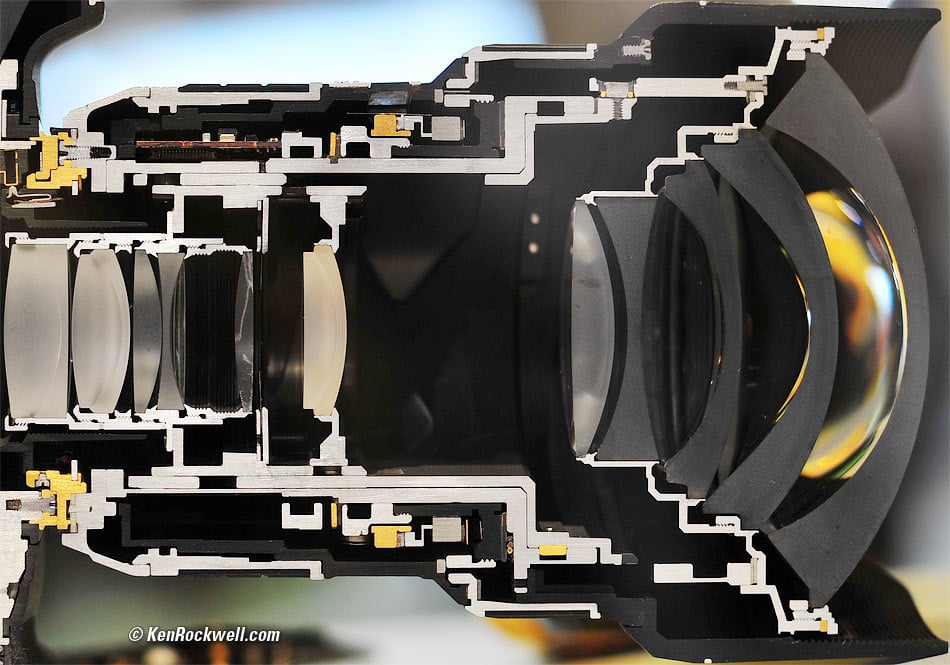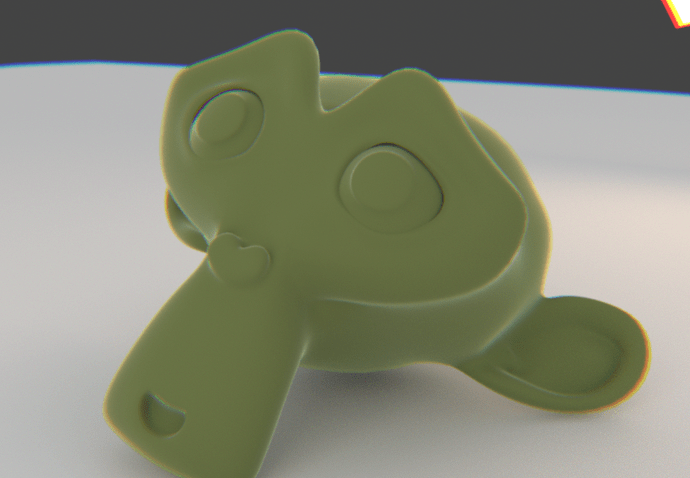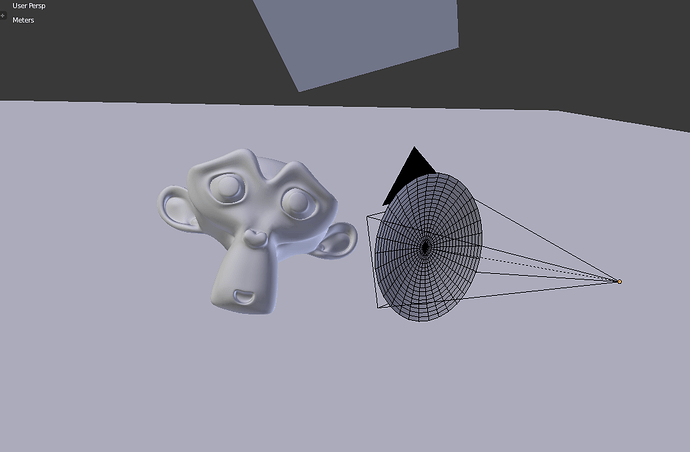That just adds that extra bit of detail. Thanks!
The other day in Cycles Test I was wondering if Cycles can do a real prism. Now, it CAN! THANK YOU, PETRLUDVIK AND SOURVINOS!
Just a thought…
I made a lens object(a filled concave circle) and put it right in front of the camera and with this “Dispersion Glass” node setup and…
some “chromatic aberration” appeared…
Attachments
LOL, the last to experiments are, once again, so over the top, hehe… Someone should create a real dispersive glass shader out of this nodetree… 
You know, that’s funny. A few hours ago, outside and away from the computer after I made my prism, I was thinking about doing EXACTLY what you just posted. Why not make actual functioning cams (or the lenses anyway, but with this dispersion…) It would mean that every shot in animation would pick up natural lens flare, and all kinds of other effects that have to be comped in now. I bet it would make a real difference in the look of animation, and in a visceral way that is hard to predict. I’m going to start trying it a lot more.
VERY COOL EXPERIMENT! ![]()
@Farmfield: Thanks.
I cannot believe that is even possible, it sounds absolutely outrageous, hehe… But at the same time I see no reason why it couldn’t work. I’m gonna stop thinking about it now before something breaks inside my head, I just can’t get the logic of that to fit into my sense of reality… ![]()
That’s exactly how I felt about Cycles being capable of making a working prism. Hey, these are just CARTOONS we do. There’s no way on earth a cartoon should be able to make an actual functioning prism. It just shouldn’t work.
Yet, it does.
And now, with Eversimo’s lenses, we should be able to make something very very much like the way a real camera works in the real world. I’m trying to make one like Eversimo’s now, and, of course, having some trouble (I’m no genius at this stuff…)
I don’t know if it will work the way I said earlier. But, having played with the Dispersive Glass working on the prism, I was really struck by how gorgeous the colors were on the glass itself. So, I won’t be surprised if these lenses start doing some really cool, even unexpected things when we start using them as cameras in everyday animation. And that’s what makes making cartoons fun.
Scooby Doo, Smurphs, and JJAbrams “Star Trek,” EAT YOUR FRIGGIN HEARTS OUT!
(Assuming I can make it work, that is…![]() )
)
I don’t really understand about lenses, or even about “chromatic aberration”…
I just have this idea and tried to do.
BUT:
I don’t know if this result is correct. It looks like “chromatic aberration” but is it physically correct?
I think we need the information about the concavity of the lens, the thickness of the lens… I think that the material settings are ok, but I don’t understand about glass dispersion… I believe, based on this thread results, that this glass with disparsion is perfect!
I agree with the idea of to put this “lenses studies” as camera options in camera properties, that sounds good!
Tomorrow I will test this lens with the node tree modified by sourvinos, that he shared as more physically correct setup…
Someone should create a real dispersive glass shader out of this nodetree…
Haha, I just did. Kinda. A quick fix is to take awesome node trees like this and monsterdog’s car shader, convert them into groups that have inputs on the left renamed to describe what they do, then name the group. Then you just open it up, press the “f” button, and save user preferences back in the 3d view. Now if you want to add it, go to the materials section like you normally would, but this time it is on the right instead of the left when you press the “surface” option.
I hope that made sense, it works really well.
Also, these are great ideas. Very cool!
So… It start from one node posted mounth ago with RGB splotted and
Add shader. And This gaves me idea.
How about creating real lense with titlt shift or real fish eye?
So I’ve modeled a lens from a diagram I found on Google. I think it’s Nikkor 14-24mm f/2.8G ED. AFS. The cutaway image is from here:

lens.blend (266 KB)
Please download and do some renders with different glass shaders and environments people! The default camera is set up to cover the whole frame, so don’t move it it you don’t have to. Oh, and the render is very slow.
This thread is full of win! 
@Blazraider: YIKES! Must have taken forever to model, but looks very cool! Thank you for posting the .blend, I’ll test it. I had created my own crappy lens yesterday based on Eversimo’s idea, but mine was not as good as his, although I could make out some of the abberration he got out of his.
I’ll test your’s, and see what it can do. Looks awesome from here! Thanks again!
One thing, turn off Panorama in the camera option before testing.
Yeah, I noticed that. One thing’s for sure, Blaz, you could easily do that James Bond gunsite intro thing with no problem! ![]()
On second thought, guys, putting anything right in front of a camera, lenses, anything, is probably not a good idea. No matter what, it adds a lot of time to any render. I think lenses would be cool, for certain things, but the way to get these kinds of effects is in the compositor. Right now I’m tinkering with the compositor nodes like Dispersion and Soften and other things. I feel like there has to be some way to denoise for animation, and still get these cool dispersions like you see in the materials in this thread.
I don’t know. I’m going back through the Dispersion Glass material that the OP and Sourvinos did, but replicating it in the compositor to create a compostor lens or filter that does all this to get the sort of lensflares and effects I was navelgazing about earlier. On the other hand, that would also add some rendertime too…
I blame JJAbrams for this ailment. As always.
Just an animated lens try: http://www.4shared.com/zip/de62A8-Y/LenseStudy.html
I tried to use the sourvinos node setup but no chromatic aberration appeared…
Here is my file if anyone want to take a look.
Attachments
ChromaticAberration.blend (721 KB)
I love the idea of creating lensflares (and other lens effects) with an actual lens in Cycles but due to increased rendertimes and such I just don’t think it’ll be practical. What would be cool though, is a pre-rendering ‘filter’ to emulate a specific lens, like a virtual lens that tweaked the settings of the renderer. That would be pretty cool… 
And how nice Blender is, when it comes to flares there’s just no beating VCP’s ‘Optical Flares’ - and I know, you just cant say something is the best, but in this case it just is, hehe… In the last Transformers movie, DD actually did the flares in AE, then they was comped on top of the final plates in Nuke. That’s a totally idiotic workflow but they did it just so they could use OF, hehe… That say’s a lot. 
Someone has also done a similar thing, modeling a lens and rendering through it, in Lux, I saw the thread sometime last year… basically in the end, the render times are just too long to justify doing it except as a small test.
I wonder, with computing power going up, perhaps simulating lenses is the next step in rendering. I remember when raytracing was to slow. Then GI. Now we pathtrace with GI. So what’s the next step? Having the computing power to be able to simulate the lens isn’t far off, so why not, hehe… Pretty awesome thing, actually getting flares and optical effects in render…
You are probably right, but on the other hand, what is the point of simulating lenses? Lenses are essentially a limitation of cameras, so its only real purpose is to combine CG with real footage. Making things look like photographs is fine, but why not just take a photograph?

